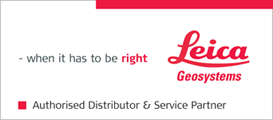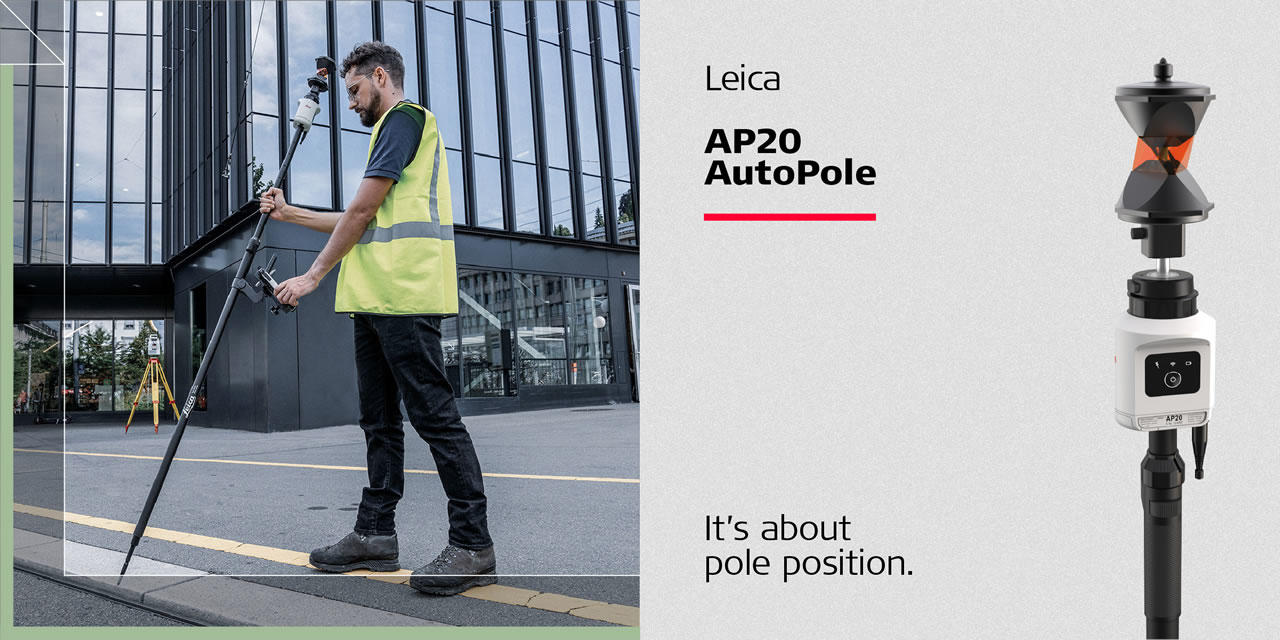Leica AP20 AutoPole - How It Works & The Benefits
Posted by G2 Survey on 17th Jun 2022
 The Leica AP20 AutoPole allows surveying and construction professionals to work with increased productivity and reliability whilst significantly reducing costs and mistakes.
The Leica AP20 AutoPole allows surveying and construction professionals to work with increased productivity and reliability whilst significantly reducing costs and mistakes.
The AP20 communicates with existing and future Leica Geosystems automated total stations, MultiStations and field controllers running Leica Captivate version 7 or later. This includes:
TS16, TS60 and MS60 instruments
CS20, CS30 and CS35 controllers
The AP20 can be used together directly with an instrument in 2-person mode or used with a field controller in 1-person TS robotic mode or GS mode.

How does Tilt Compensation work?
The AP20 sensor module contains an integrated IMU (Inertial Measurement Unit). An IMU is an altitude sensor made up of various sub-sensors which capture data about movement, ultimately allowing the tilt of the pole to be determined.
The IMU was designed and developed by Leica Geosystems specifically for surveying applications, and was first used in the Leica GS18 T GNSS sensor.
Continuous Target Positions
Working in robotic mode, an automated instrument must be locked to the target on the pole, with continuous distance measurements active. This provides continuous target positions.
IMU Data
The IMU in the AP20 contains integrated accelerometers and gyroscopes, which measure and report the force and angular rate of the pole as it is moved about. This allows to continuously derive the motion of the pole in terms of velocity and orientation change.
Merging the Information
The continuous target positions and the IMU data are merged together and processed using an algorithm which ultimately computes the attitude of the pole. The tilt information (amount of tilt and the direction of tilt) of the pole are derived from the attitude.
This fusion of the position data and IMU data to calculate the tilt information is developed and patented by Leica Geosystems.
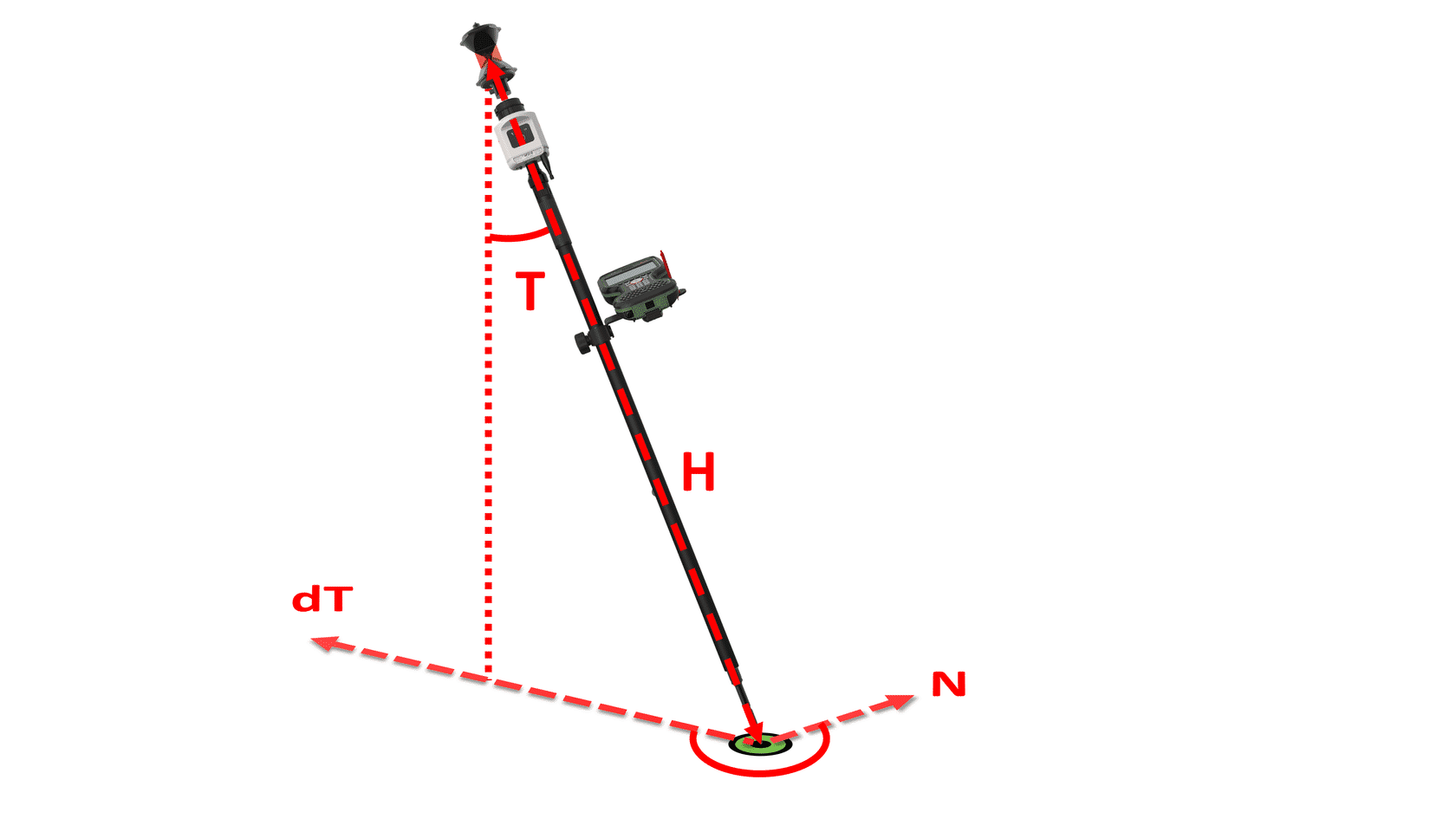 Tilt Compensated Measurement
Tilt Compensated Measurement
Each measured target position is projected along the tilted pole using the tilt information and the target height. The position of the pole tip is now computed, giving a tilt compensated measurement.
How does PoleHeight work?
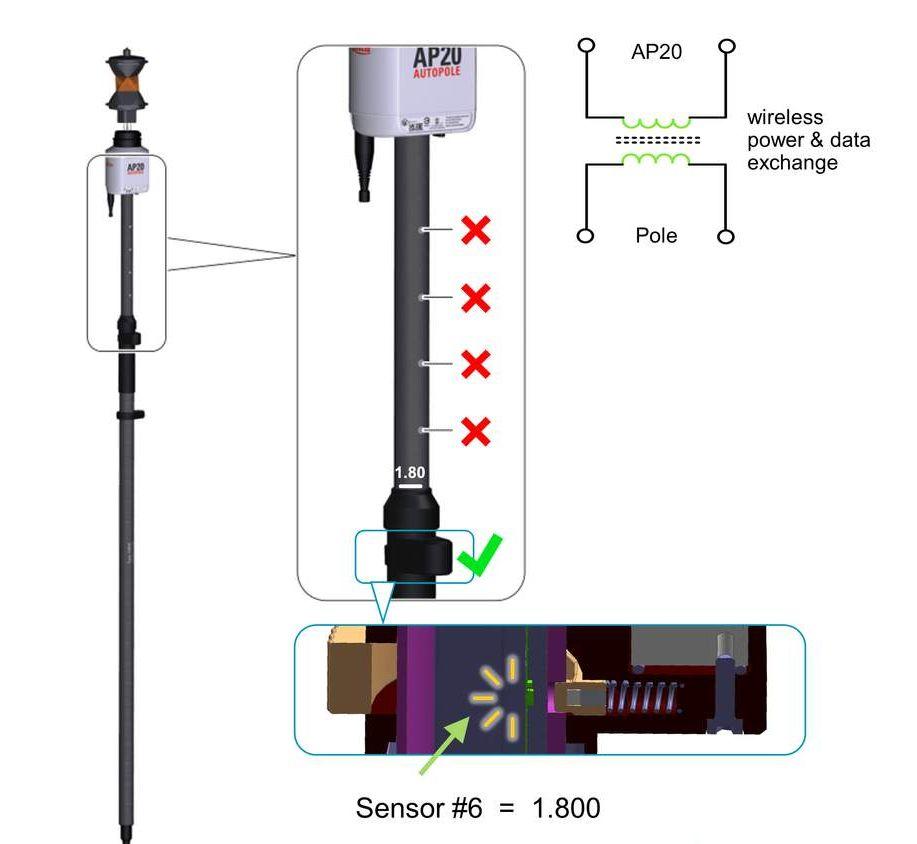
Passive height detection system
The AP reflector pole contains a passive height detection system, which is based on integrated sensors situated at each of the pole's snaplock positions.
These sensors are inductively powered by the AP20 sensor module, and allow the reflector height of the pole to be automatically measured.
AP Reflector Pole
The AP reflector pole is height adjustable with several snap lock positions. At each snaplock position there is a Hall sensor.
Once the AP20 sensor module is attached to the AP reflector pole, it inductively powers the sensors, allowing them to detect at which snaplock position the pole is adjusted to.
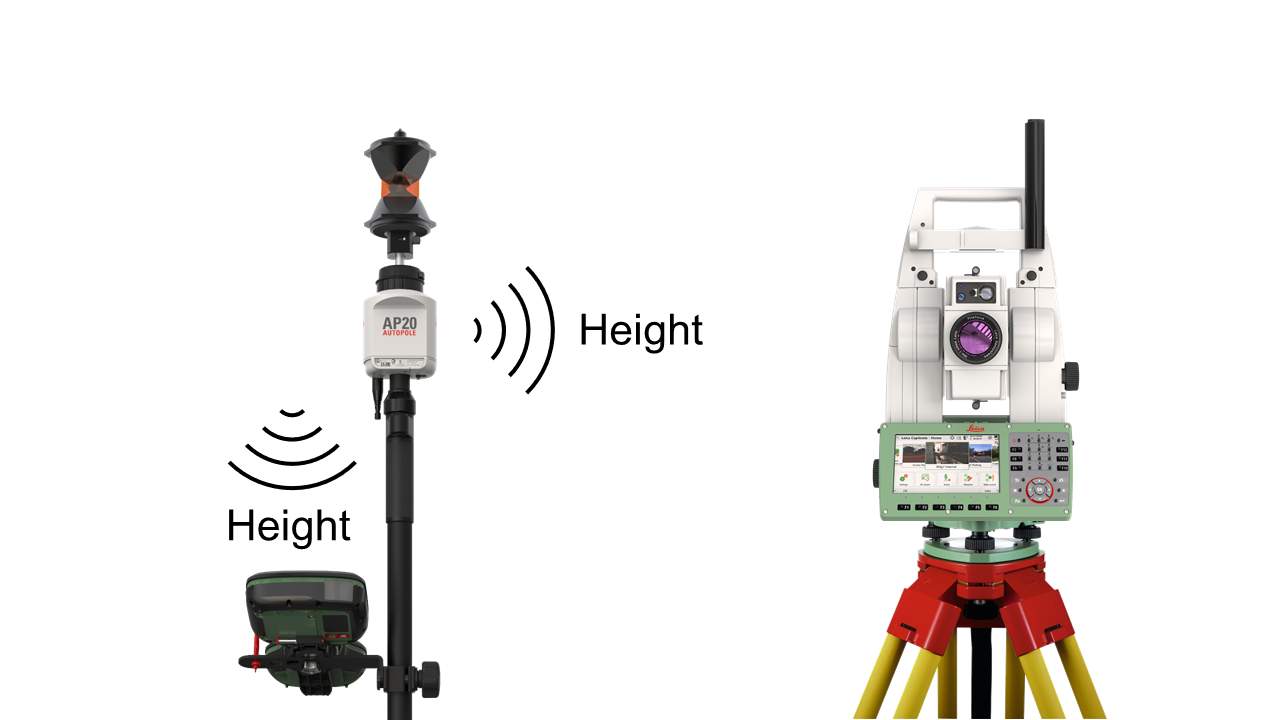
AP20 Sensor Module
The AP20 sensor module detects the signal from the sensors in the pole, allowing it to determine at which snap lock position the pole is adjusted to. The reflector pole height can then be derived.
The AP20 sensor module transmits the pole height to either the instrument or controller software, using Bluetooth.
Field Software
The instrument or controller receives the pole height information, and the Target height (auto) field in the Captivate field software is automatically updated with the correct value.
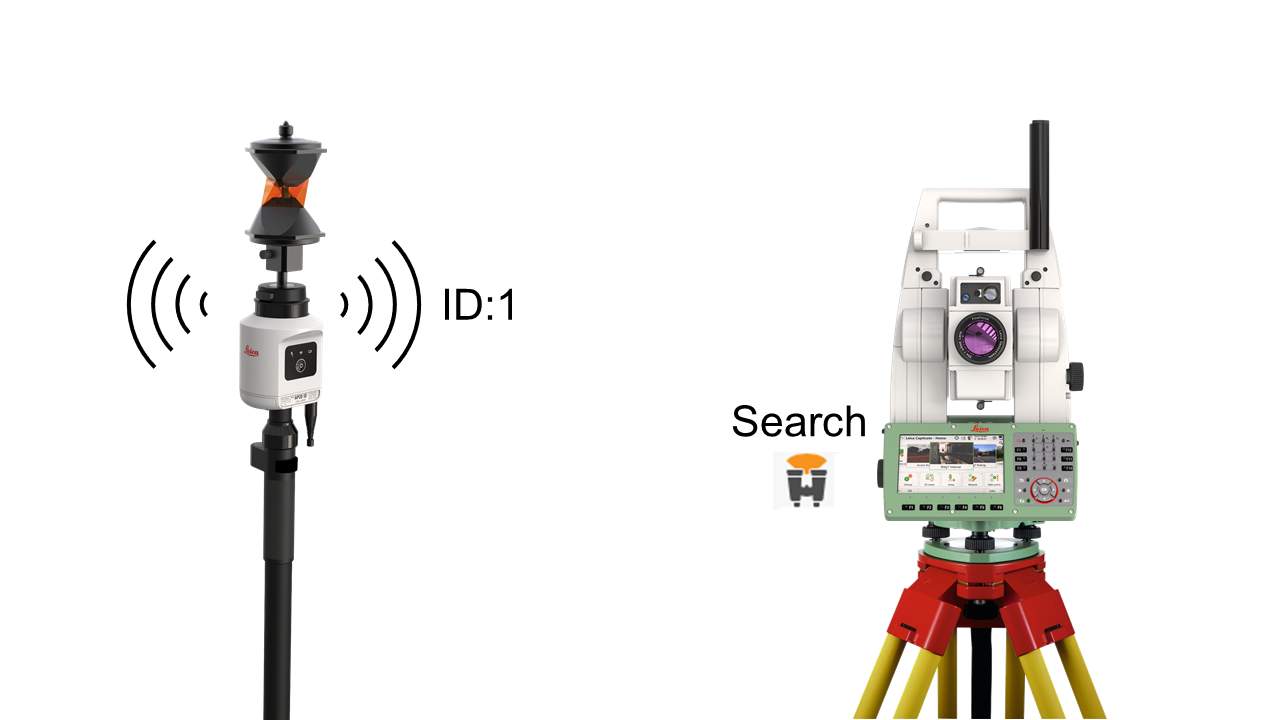 How does TargetID work?
How does TargetID work?
The AP20 sensor module contains a ring of LEDs which can broadcast a target ID signal in all directions.
Whenever the instrument performs a target search, any potential targets that are detected are also checked for the target ID signal.
The instrument will only lock to the target if the correct target ID has been detected, otherwise the target will be ignored.
AP20 Sensor Module
In the AP20 sensor module there are 10 LEDs arranged in a 360° ring around the top of the sensor. The LEDs transmit an optical infra-red signal, which is encoded with a unique identifier, known as the target ID.
Whenever a target search is started on the instrument, the LEDs illuminate and start broadcasting the target ID in all directions.
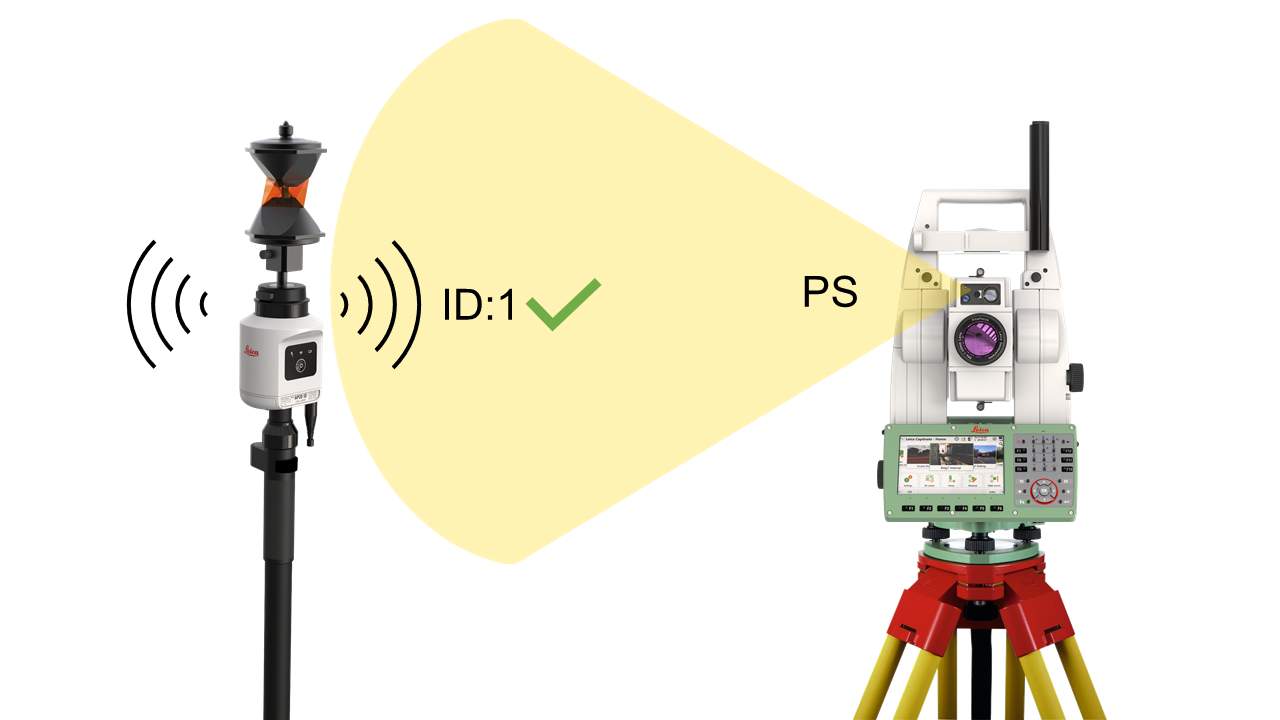 Instrument
Instrument
When performing a target search, the instrument tries to detect any potential targets using either its ATR or PowerSearch sensor.
When a potential target is detected, the instrument uses its PowerSearch sensor to check if the target is broadcasting the correct target ID signal from the AP20 sensor module.
The instrument will only complete its search and lock to the target if it detects the correct target ID. This will be the operator's target with the AP20 AutoPole.
Benefits of the AP20
Three existing problems for users of automated total stations
The introduction of automated total stations has allowed surveying and construction professionals to measure and stake with increased automation for several years, however the following three problems have continued to exist:
- The reflector pole must be held vertically while measuring and staking points
- Points can be measured and stored with the wrong target height
- The instrument can lock to the wrong target
The reflector pole must be held vertically while measuring and staking points
When measuring or staking points with a conventional reflector pole, the point on the ground can only be considered accurately measured when the pole is held vertical.
To ensure the pole is held vertical, the surveyor needs to level the bubble on the pole before each measurement is made, or each point is staked.
The need to hold the pole vertically for each measurement causes the following problems:
By not needing to hold the pole vertical for each measurement, points can be measured and staked easier, safer and a lot faster than before.
Points can be measured and stored with the wrong target height
When measuring or staking points, it is often needed to change the pole height due to obstructions to the line of sight between the instrument and target.
When using a conventional reflector pole, these changes in pole height need to be entered manually into the field software, in order for the height of the measured or staked points to be calculated correctly.
Entering the pole height manually is subject to mistakes. There are several ways a mistake can be made, including:
- Wrongly reading the height of the pole
- A communication mistake between the person at the pole and the instrument operator
- Forgetting to type or incorrectly typing the height into the field software
Because of the risk of mistakes, needing to manually enter the pole height may cause the following problems:
PoleHeight removes the need to read and enter target height changes, and also eliminates the need to correct wrongly entered or forgotten target heights.
The instrument can lock to the wrong target
When measuring or staking points, obstructions such as people or vehicles can cause interruptions to the line of sight between the instrument and target.
When working robotically, these obstructions can cause the instrument to lose lock of the target, meaning that a search needs to be performed to re-lock to the target. On a busy site, this may happen many times during the day.
When a target search is performed, there is the risk that the instrument may detect other similar targets in the area. Because the instrument cannot determine which target is the correct one, it may end up locking onto the wrong target. These might include:
- Backsight or foresight targets
- Other surveyors measuring on site
- Reflections or other targets such as retro reflectors
Because the instrument can lock to the wrong target, it can cause the following problems:
TargetID prevents the instrument locking onto the wrong target and increases the productive time on the pole.
Summary of the benefits of using the AP20 AutoPole:
Increased measuring and staking speed
Using the AP20 AutoPole means that points can be measured and staked much faster than ever before. There is also less time needed in correcting mistakes both in the field and in the office.
More reliable data
Using the AP20 AutoPole helps eliminate measuring points with the wrong height or wrong location, meaning the measured data is more reliable with fewer errors.
Less frustration
Using the AP20 AutoPole means there is less stress and frustration while measuring, meaning the operator can focus more on measuring efficiently whilst being more aware of their surroundings.

